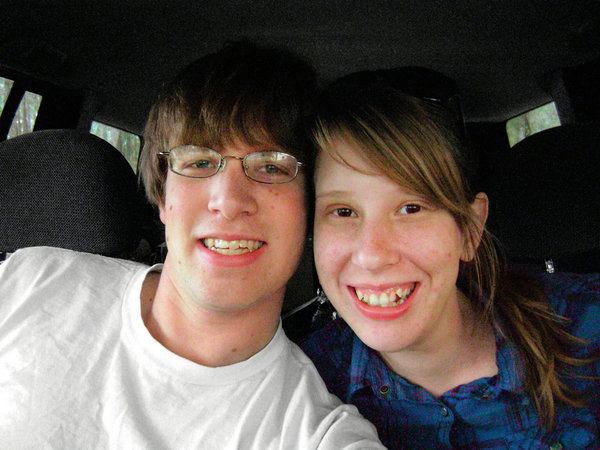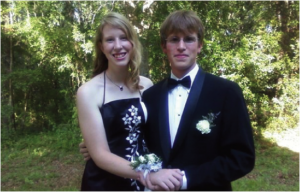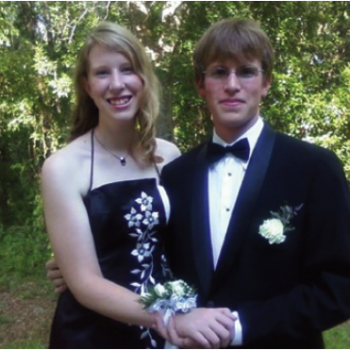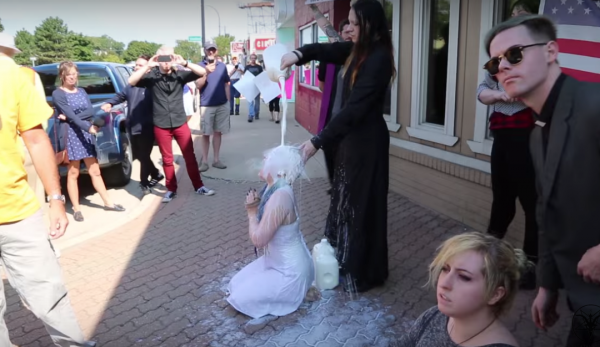
From the New York Times:
At 2:15 in the afternoon on March 28, 2010, Conor McBride, a tall, sandy-haired 19-year-old wearing jeans, a T-shirt and New Balance sneakers, walked into the Tallahassee Police Department and approached the desk in the main lobby. Gina Maddox, the officer on duty, noticed that he looked upset and asked him how she could help. “You need to arrest me,” McBride answered. “I just shot my fiancée in the head.” When Maddox, taken aback, didn’t respond right away, McBride added, “This is not a joke.”
Maddox called Lt. Jim Montgomery, the watch commander, to her desk and told him what she had just heard. He asked McBride to sit in his office, where the young man began to weep.
About an hour earlier, at his parents’ house, McBride shot Ann Margaret Grosmaire, his girlfriend of three years. Ann was a tall 19-year-old with long blond hair and, like McBride, a student at Tallahassee Community College. The couple had been fighting for 38 hours in person, by text message and over the phone. They fought about the mundane things that many couples might fight about, but instead of resolving their differences or shaking them off, they kept it up for two nights and two mornings, culminating in the moment that McBride shot Grosmaire, who was on her knees, in the face. Her last words were, “No, don’t!”
I’m very honored to have been involved in my most recent book project, Forgiving My Daughter’s Killer: A True Story of Loss, Faith, and Unexpected Grace by Kate Grosmaire. Getting to know Kate and Andy, the parents of Ann, challenged the way I looked at forgiveness. The way they responded to Conor has been described as “radical forgiveness” (though Kate disagrees with that phrase). The story continues:
When Conor was booked, he was told to give the names of five people who would be permitted to visit him in jail, and he put Ann’s mother Kate on the list. Conor says he doesn’t know why he did so — “I was in a state of shock” — but knowing she could visit put a burden on Kate. At first she didn’t want to see him at all, but that feeling turned to willingness and then to a need. “Before this happened, I loved Conor,” she says. “I knew that if I defined Conor by that one moment — as a murderer — I was defining my daughter as a murder victim. And I could not allow that to happen.”
She asked her husband if he had a message for Conor. “Tell him I love him, and I forgive him,” he answered. Kate told me: “I wanted to be able to give him the same message. Conor owed us a debt he could never repay. And releasing him from that debt would release us from expecting that anything in this world could satisfy us.”
Challenging, no?
I remember reading that article in the New York Times so many years ago, and being floored at the mother’s attitude and heart… even toward the person who ended her beloved daughter’s life. When I was later contacted by an agent to tell this very story, I knew it was for me.
Many poignant moments of forgiveness pop up in this story — not only between Kate and Conor, but between both sets of parents. And Andy experienced a miraculous moment in the hospital that will definitely make you think twice about forgiveness. (And, it will probably give you chill bumps, too.)
Here’s the video teaser for the book:
Her new book Forgiving My Daughter’s Killer: A True Story of Loss, Faith, and Unexpected Grace is an uplifting, beautiful story of a family recovering from a tragic loss… with grace and love.
Buy it by clicking on the image below, but warning: you might never be the same.
RELATED:
What is “restorative justice” and how does it empower the victims?
What happened when a mother goes to visit her daughter’s shooter in jail?
Why does Kate Grosmaire object to the idea of “radical forgiveness?”











